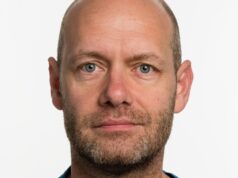
“We are entering an era where true scientific evidence from IONM [intraoperative neuromonitoring] is guiding technology and our clinical practice.” This was one of the salient messages delivered by Steven Falowski (Argires Marotti Neurosurgical Associates of Lancaster, Lancaster, USA) at the International Neuromodulation Society’s (INS) interim meeting (11–13 November, Mumbai, India).
In a presentation on his perception of the future of spinal cord stimulation (SCS), and the mechanisms of action involved in this treatment modality, Falowski noted that the most commonly accepted method for confirming pain-paraesthesia during a lead implantation procedure is via verbal feedback from the patient. A similar approach is used as a safety marker while traversing the lead in the neural axis.
However, this requires the patient to be conscious during such procedures—causing them stress and discomfort, and carrying the risk of oversedation in a prone, non-intubated patient. And, in certain situations, it may not be possible to perform ‘awake’ interventional procedures at all, he added.
Falowski went on to posit that IONM represents a potential option in asleep patients for both safety and confirmation of lead placement, with several studies having demonstrated potential superior results regarding efficacy, safety, adverse events and time savings. In addition, current Neurostimulation Appropriateness Consensus Committee (NACC) guidelines advocate for the use of IONM in an asleep patient.
IONM has now been utilised as a method for recording human nerve activity during SCS therapy. The majority of work on mechanisms of action, as well as various waveform technologies, has revolved around computer and animal modelling, Falowski continued, with IONM recordings having demonstrated a potential mechanism of action for SCS and the multiple industry waveforms on the market today.
Referencing a 2019 paper published in Neuromodulation: Technology at the Neural Interface, Falowski stated that the BurstDR platform (Abbott) has been associated with the most fundamental differences compared to traditional tonic stimulation, with charge accumulation, hyperexcitability effects, and penetration to deeper nerve fibres at significantly lower amplitudes.
Subsequent follow-up investigations have also demonstrated that lower frequencies of BurstDR can have the same underlying effects with even more significant energy savings, while multi-site BurstDR can activate more areas for broader yet more focal coverage—creating further energy savings—he added. Additional research with IONM has looked at the measurements of evoked compound action potentials (ECAPs), as well as measurements of physiologically mapping the spinal cord, lead placement, and patient response to the therapy, which holds the potential to deliver more objective SCS treatments, according to the speaker.
“The use of IONM for SCS has had a significant scientific progression over the years,” Falowski said. “It started by being proven as a marker of safety and confirmation of lead placement, to subsequently demonstrating potentially superior results, lower adverse advents, and time savings in the operating room. The newest uses of IONM have looked at human nerve recordings to postulate mechanisms of action of various waveforms.”
In addition to the potential benefits that clinical practice with SCS may see moving forward, Falowski concluded by touching on the fact that increased objectivity with IONM could enable quick and easy research, helping to inform future clinical trials.












